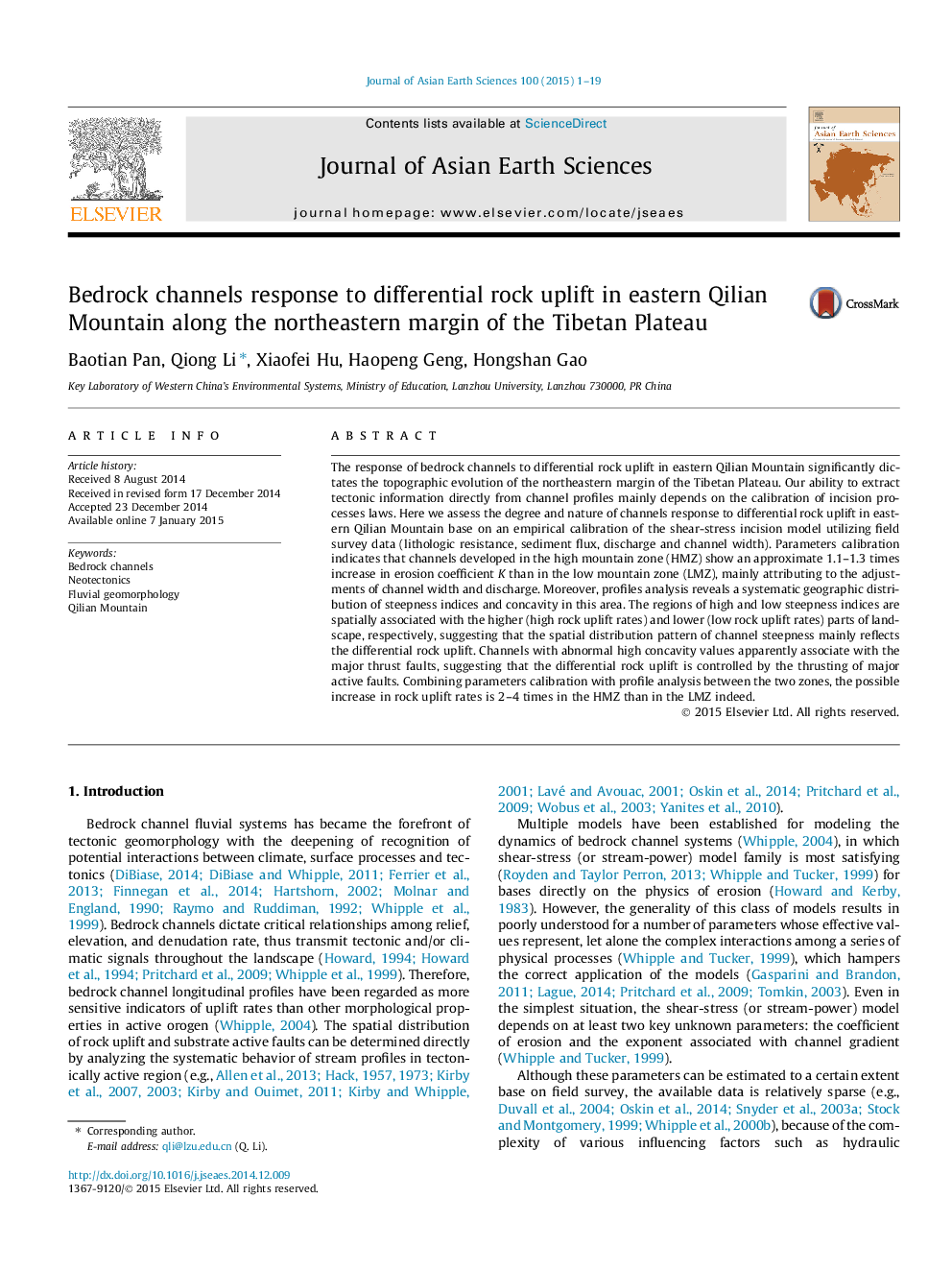| کد مقاله | کد نشریه | سال انتشار | مقاله انگلیسی | نسخه تمام متن |
|---|---|---|---|---|
| 4730469 | 1640369 | 2015 | 19 صفحه PDF | دانلود رایگان |
• Testing and calibrating the shear-stress bedrock-incision model.
• Spatial distribution pattern of differential rock uplift rate and controlling factor.
• Response of bedrock channels to tectonic forcing in active orogens.
The response of bedrock channels to differential rock uplift in eastern Qilian Mountain significantly dictates the topographic evolution of the northeastern margin of the Tibetan Plateau. Our ability to extract tectonic information directly from channel profiles mainly depends on the calibration of incision processes laws. Here we assess the degree and nature of channels response to differential rock uplift in eastern Qilian Mountain base on an empirical calibration of the shear-stress incision model utilizing field survey data (lithologic resistance, sediment flux, discharge and channel width). Parameters calibration indicates that channels developed in the high mountain zone (HMZ) show an approximate 1.1–1.3 times increase in erosion coefficient K than in the low mountain zone (LMZ), mainly attributing to the adjustments of channel width and discharge. Moreover, profiles analysis reveals a systematic geographic distribution of steepness indices and concavity in this area. The regions of high and low steepness indices are spatially associated with the higher (high rock uplift rates) and lower (low rock uplift rates) parts of landscape, respectively, suggesting that the spatial distribution pattern of channel steepness mainly reflects the differential rock uplift. Channels with abnormal high concavity values apparently associate with the major thrust faults, suggesting that the differential rock uplift is controlled by the thrusting of major active faults. Combining parameters calibration with profile analysis between the two zones, the possible increase in rock uplift rates is 2–4 times in the HMZ than in the LMZ indeed.
Journal: Journal of Asian Earth Sciences - Volume 100, 15 March 2015, Pages 1–19
